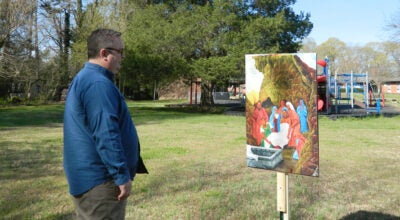Ester Marsh: Low testosterone and exercise
Published 12:00 am Monday, September 8, 2014
All right guys, this one is for you.
Last week, I wrote about menopause. This week, it’s the “guy” version of hormone changes.
There are all kinds of reasons for hypogonadism, which means that the testicles don’t produce enough of the male sex hormone testosterone. Or, as we hear it often called, “low T.”
Aging is a big reason for testosterone levels dropping. Around age 30, most men start to experience a gradual decline. Common symptoms from a drop in testosterone can be:
• Loss of strength
• Loss of sex drive
• Being more fatigued
• Feeling depressed
Before you blame it all on low T, have your doctor do a blood test. Nowadays, tests are very accurate and they can determine where your levels are. When they were not so accurate, it was hard to pinpoint the true causes of the symptoms. The symptoms of low T can be mirrored by other medical problems such as diabetes, depression, high blood pressure and coronary disease, to name a few. Again, have your doctor diagnose whether the problem is low testosterone or other medical issues.
As with low estrogen in women, men can also do hormone replacement therapy. This therapy will address symptoms such as low libido, poor muscle mass and low energy.
Even though this is more common in older men, it can affect younger men, even teens. Some other possible causes for these symptoms include injury to the testes, testicular cancer or genetics.
And yes, even with low testosterone exercise has benefits.
Studies have shown bursts of testosterone after exercise. Todd Schroeder Ph.D., who studies hormones in older men at the University of Southern California, says, “Sometimes, it’s 15 minutes that testosterone is elevated after exercise; sometimes, it can be up to an hour.” There is no clear data on the benefits, if any, of these “jumps” in T levels, but we all know the other great benefits of exercise.
Studies have also shown that men with low testosterone, through exercise alone, do not experience long-term increased testosterone levels after exercise. But men with borderline normal and low testosterone do show the benefits of testosterone level increase.
Four factors that can affect your testosterone levels:
• Weight. Obesity is a big part of low testosterone levels.
• Age. Older men get less of a “post-exercise boost” in testosterone but see an increase in muscle health, bone strength and balance.
• When you exercise, testosterone levels are typically higher in the morning and the lowest in the afternoon. Research has shown that weight training in the evening may have a bigger effect on testosterone levels.
• Your fitness level. Initially, someone who starts an exercise program will see and feel more of a boost in testosterone levels than someone who is already in good shape. After a few weeks of exercise, the body gets used to it and the hormone response will decrease.
All types of exercise effect testosterone. Endurance training and strength training both briefly boost testosterone levels. Research has proven that the following workout regimen will give you a greater boost in testosterone levels from strength training:
A full-body workout will give you a greater boost than working only one body part. Make sure you let your body recover 48 hours before you do strength training again.
• Lift heavier weights with fewer reps
• Take shorter rest between sets and exercises.
For total health, you need to work on cardiovascular health, strength and flexibility and the right diet. The “push away” exercise can be very beneficial. Push away from the table.
If you have not exercised, start slowly and work your way up to a regular workout regimen. You want to avoid overtraining (more on that in next week’s column) because overtraining can also lower your testosterone levels.
Ester Marsh is the health and fitness director for the JF Hurley Family YMCA.


